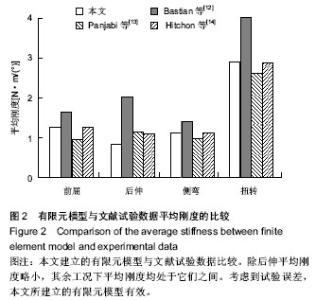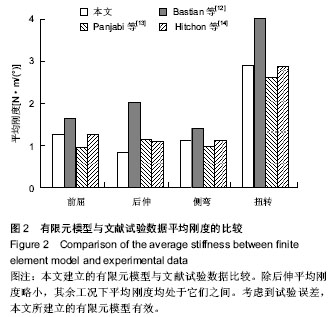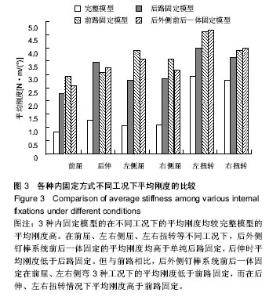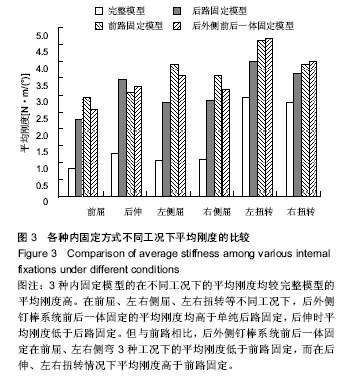| [1] Seoudi H, Laporta M, Griffen M, et al. Experience with 161 cases of anterior exposure of the thoracic and lumbar spine in an acute care surgery model: impact of exposure level and underlying pathology on morbidity. Spine (Phila Pa 1976). 2013;38(18):1602-1606.
[2] Aligizakis AC, Katonis PG, Sapkas G, et al. Gertzbein and load sharing classifications for unstable thoracolumbar fractures. Clin Orthop Relat Res. 2003;(411):77-85.
[3] Wood KB, Bohn D,Mehbod A. Anterior versus posterior treatment of stable thoracolumbar burst fractures without neurologic deficit: a prospective, randomized study. J Spinal Disord Tech. 2005;18 Suppl:S15-23.
[4] Tezeren G, Gumus C, Bulut O, et al. Anterior versus modified combined instrumentation for burst fractures of the thoracolumbar spine: a biomechanical study in calves. J Orthop Surg (Hong Kong). 2008;16(3):281-284.
[5] Leduc S, Mac-Thiong JM, Maurais G, et al. Posterior pedicle screw fixation with supplemental laminar hook fixation for the treatment of thoracolumbar burst fractures. Can J Surg. 2008; 51(1):35-40.
[6] 汪建良,许科峰,于晓华,等.胸腰椎后外侧钉棒系统前后一体固定技术治疗胸腰椎疾病的近期疗效[J].中国脊柱脊髓杂志, 2011, 21(4):295-298.
[7] 陈浩,于晓华,华国军,等.腰椎运动节段流固耦合有限元模型的建立与验证[J].中国组织工程研究与临床康复, 2010,14(52): 9706-9709.
[8] Natarajan RN,Andersson GB. The influence of lumbar disc height and cross-sectional area on the mechanical response of the disc to physiologic loading. Spine (Phila Pa 1976). 1999; 24(18):1873-1881.
[9] Polikeit A, Ferguson SJ, Nolte LP, et al. Factors influencing stresses in the lumbar spine after the insertion of intervertebral cages: finite element analysis. Eur Spine J. 2003;12(4):413-420.
[10] Zhong ZC, Wei SH, Wang JP, et al. Finite element analysis of the lumbar spine with a new cage using a topology optimization method. Med Eng Phys. 2006;28(1):90-98.
[11] Goel VK, Ramirez SA, Kong W, et al. Cancellous bone Young's modulus variation within the vertebral body of a ligamentous lumbar spine--application of bone adaptive remodeling concepts. J Biomech Eng. 1995;117(3):266-271.
[12] Bastian L, Knop C, Lange U, et al. Effect of a crosslink or cerclage on the mechanical stability of an internal fixator. Orthopade. 1999;28(8):714-722.
[13] Panjabi MM, Oxland TR, Lin RM, et al. Thoracolumbar burst fracture. A biomechanical investigation of its multidirectional flexibility. Spine (Phila Pa 1976).1994;19(5):578-585.
[14] Hitchon PW, Goel VK, Rogge TN, et al. In vitro biomechanical analysis of three anterior thoracolumbar implants. J Neurosurg. 2000;93(2 Suppl):252-258.
[15] Lazaro BC, Deniz FE, Brasiliense LB, et al. Biomechanics of thoracic short versus long fixation after 3-column injury. J Neurosurg Spine. 2011;14(2):226-234.
[16] Radcliff K, Limthongkul W, Gruskay J, et al. Surgical Planning for the Treatment of Thoracolumbar Fractures: Anterior, Posterior, or Combined Approach? Sem Spine Surg. 2012; 24(4):244-251.
[17] Dai LY, Jiang SD, Wang XY, et al. A review of the management of thoracolumbar burst fractures. Surg Neurol. 2007;67(3):221-231; discussion 231.
[18] 许科峰,汪建良,肖俊,等.后外侧减压椎间融合同侧椎弓根与椎体钉棒联合固定治疗胸腰段椎间盘突出症[J].中国脊柱脊髓杂志, 2014,24(5):476-478.
[19] Vahldiek MJ,Panjabi MM. Stability potential of spinal instrumentations in tumor vertebral body replacement surgery. Spine (Phila Pa 1976). 1998;23(5):543-550.
[20] Zdeblick TA, Warden KE, Zou D, et al. Anterior spinal fixators. A biomechanical in vitro study. Spine (Phila Pa 1976). 1993; 18(4):513-517.
[21] 农鲁明,周栋,徐南伟.三维有限元模型分析3种内固定方式治疗严重腰椎不稳定型骨折的生物力学特点[J].中国组织工程研究与临床康复, 2011,15(30):5526-5530.
[22] Park WM, Park YS, Kim K, et al. Biomechanical comparison of instrumentation techniques in treatment of thoracolumbar burst fractures: a ?nite element analysis. J Orthop Sci. 2009; 14:443-449. |



